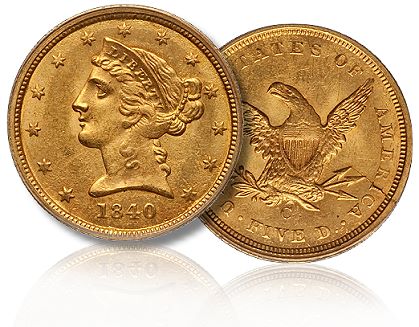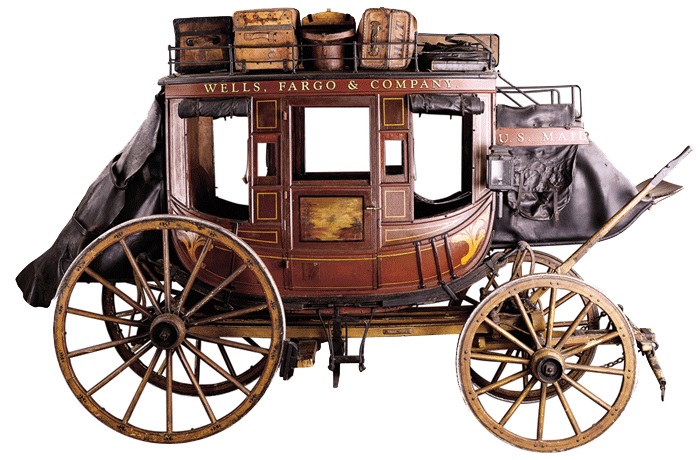I’ve blogged about some boring topics related to my research for my Oregon Trail and Gold Rush novels, but this post may discuss the most boring—banking. Yet one of the biggest problems I had in plotting my novel was how my protagonist could move money from the East Coast to Oregon, and then between California and Oregon.
My hero is a wealthy young man from Boston. He seems to have money to spend whenever he needs it. He was the son of a banker in Boston, so he would have had a sophisticated understanding of how to move money in the 1840s. But how did he move it from place to place? And how did he keep it—did he carry coins or paper or something else?
 The easy part of my research was determining what coins were in circulation in 1847-1850. The hard part was describing how emigrants in the West bought things or paid debts when they did not have coins or could not readily transfer them (from California to Oregon, for example).
The easy part of my research was determining what coins were in circulation in 1847-1850. The hard part was describing how emigrants in the West bought things or paid debts when they did not have coins or could not readily transfer them (from California to Oregon, for example).
In the 19th century, many citizens disliked banks even more than today’s citizens do after the Great Recession. It wasn’t necessarily distrust of financial exchanges that led to the distaste for banks. Rather, financial institutions were disliked as much because they were corporations as because they lent money—all corporations were distrusted. The agrarian society of the 1840s saw little need for corporations or for lenders, preferring to rely on their hard work and the produce of the land to pay their way through life.
In my research I learned some fascinating anecdotes of what people really did to move their money. Prairie schooners were sometimes built with false bottoms in the wagons. Most people put food or tools in this extra space. But one emigrant to Oregon (a free black man, named George Washington Bush) supposedly filled his with $2,000 in gold coins and bullion. When I read that, I thought of his poor oxen which had to carry all that gold over mountains and through rivers.
Today we are in the middle of a revolution in our monetary system. We are moving from hard currency and paper checks to electronic transfers of funds and even exchanges via our smartphones. Soon we may have greater use of Bitcoin and other quasi-monetary forms of exchange.
In the mid-nineteenth century, the U.S. was moving just moving beyond the barter system. There was hard currency, but few people saw much of it. There were private letters of credit, but those often traded at substantial discounts.
There was no bank in San Francisco for several years after the Gold Rush of 1849. Oregon prohibited banking in its constitution until 1880, when the state constitution was interpreted only to prohibit bank notes being used as forms of exchange. (This was probably an erroneous interpretation of the Oregon legislators’ intent, but it did allow banks to develop.)
In the gold fields, gold dust served as a means of exchange, but it traded at different values, and was always subject to the purchaser determining its purity.
 Gold that wasn’t spent in or around the Gold Rush boomtowns had to be physically hauled overland. The prospectors took their dust and nuggets to express companies, which served as clearing houses of sorts, moving the gold from place to place. Wells Fargo grew out of one of these early express companies.
Gold that wasn’t spent in or around the Gold Rush boomtowns had to be physically hauled overland. The prospectors took their dust and nuggets to express companies, which served as clearing houses of sorts, moving the gold from place to place. Wells Fargo grew out of one of these early express companies.
Determining even this much information took me months of sporadic research. I finally found a book I thought was on point, Banks & Politics in America, from the Revolution to the Civil War, Bray Hammond (Princeton University Press, 1957), but even that was not as detailed as I wanted.
Still Hammond’s book told me how bills of exchange were traded and used as collateral for loans. These bills of exchange were discounted to reflect their risk, and purchasers of the bills had to be careful they weren’t counterfeited. (Think about taking someone’s personal check today, but not really knowing if there was a bank behind the printed check. . . . let alone whether the person giving you the check had funds in his or her account.)
Promissory notes were another form of exchange, and these were also traded at a discount.
Businesses not called “banks” also functioned as banks, by extending credit, exchanging notes or bills of exchange, and discounting the notes they took.
Mercantile establishments issued credit by running tallies for their customers, requiring that the account balances be satisfied periodically, either when the crops came in or when customers had currency. Often, however, these accounts kept going for years.
Also, these store account balances operated like bank ledgers. Someone with a credit balance at the store might transfer some of his account to another person in the community with a debit balance to satisfy a debt between the two parties. Cash rarely exchanged hands.
In fact, in Gold in the Woodpile: An Informal History of Banking in Oregon, by O.K. Burrell (1967), the author discusses how merchants acted as bankers, because money was extremely rare in pioneer Oregon. In fact, an Oregon law passed in 1845 made “orders on solvent merchants” legal tender. And “good merchantable wheat at the market price” was also legal tender. Farmers were more likely to have wheat and other crops to deposit than coin.
Thus, means of exchanging funds beyond barter developed, even in the wild, wild West of 19th century America.
At least, that’s how I’m depicting it in my novel.
There were times when these systems broke down, just like today. In February 1855, the Adams & Company Express Company had just declared bankruptcy. Louis Remme had just deposited his gold in their San Francisco office when he learned the news. But their Portland, Oregon, office didn’t yet know. If he could beat the ocean steamship that had just left for Portland with the news, he could withdraw his funds in Portland and save his fortune. He rode the 700 miles to Portland in six days, just beating the steamship. He gladly paid the 1/2 percent fee to withdraw his funds in gold. As he exited the Adams Express office, the man reporting the bankruptcy entered. (For a riveting description of Remme’s journey, see Remme’s Race for a Fortune.)
Any readers who see errors in how I have described banking and systems of exchange in the 19th century, please leave me a comment. It’s not too late for me to correct my book! Thank you.
